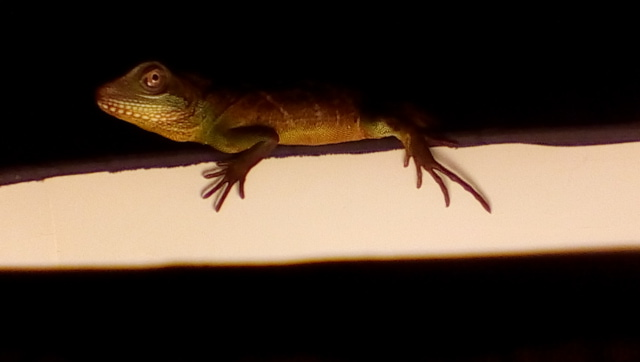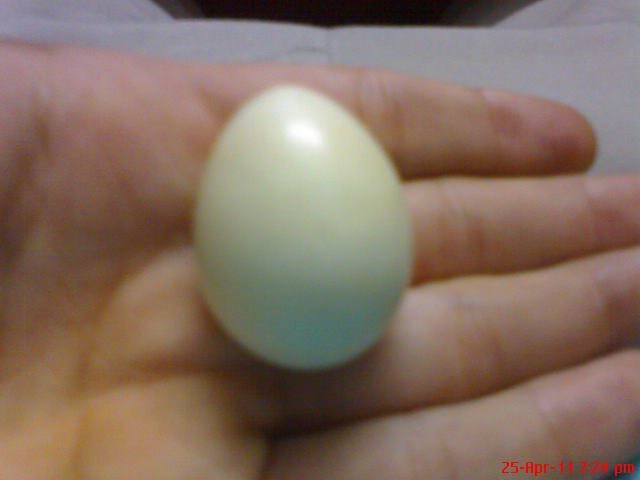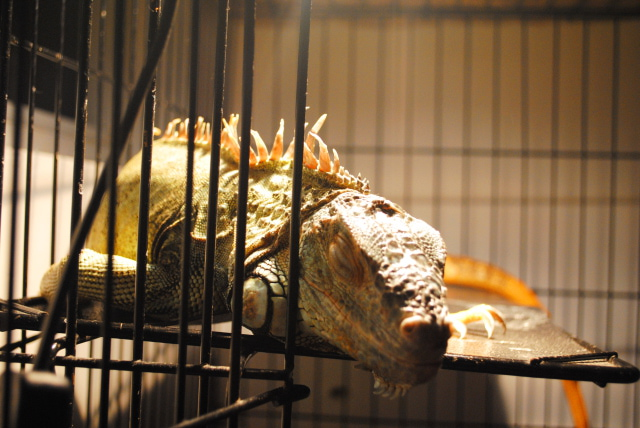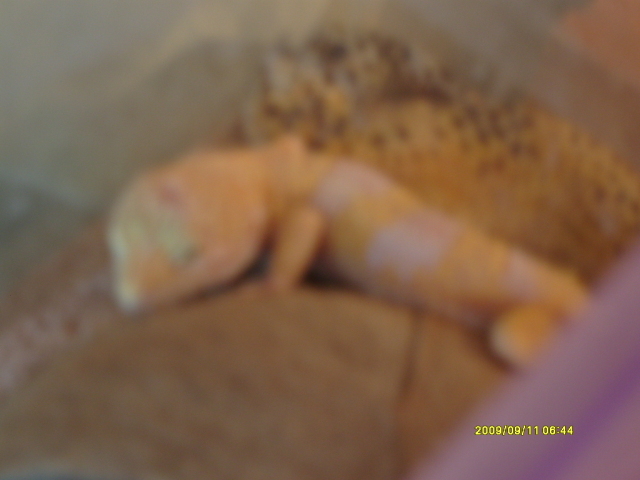QuestionHi
My mom's freind is giving me a 48in.x18in.x24in. cage with all the supplies she had for her cornsnake. I can't get a snake or turtle due to to religious things ( I personally like both) and the lizard should be herbivorous since I really hate insects. I also want it to be fairly easy to care for (not neccessarily a beginner reptile) and interactive/unique so it will keep my interist. One more thing is it will not be too costly <90 dollars.
I have been thinking about 4 choices so far:
1. Blue Tongued Skink
2. Mali Uromastyx
3. a pair of Desert Iguanas which I will TRY to breed
4. Chuckwalla
AnswerWell, blue-tongued skinks are omnivorous, so that would rule them out.
Out of that list, a Mali Uromastix is probably the best choice, as they're readily available captive bred. (No beginner to reptiles should ever buy a wild-caught animal).
The setup for a corn snake, however, is not appropriate for any diurnal (awake during the day) lizard species. You will need additional equipment to keep any of these lizards.
You will need a strong UVB flurorescent light to place across the top of the vivarium, a heat lamp fixture suitable for a mercury-vapor bulb (be sure it has a ceramic, not plastic, fixture), and a UVB Mercury Vapor reptile light. Uromastix (in fact, all herbivorous lizards) require very high heat. You will need to produce a 110 degree basking spot, without heating the rest of the cage above 80F. It's crucial that the reptile be able to move around to regulate its body temperature.
The lizard will need a small, shallow water dish--most of its moisture will come from its food, but so long as it doesn't raise humidity, a very small water source is good to have in there. Don't use sand for a substrate--cage carpet, slate tiles, or even newspaper are the safest choices.
There should be a hide cave on each end of the enclosure, and a sturdy climbing branch--secure it well so it cannot be knocked over. If the tank currently has an undertank heater, this can be removed, as it is not suitable for uromastix.
Use an indoor/outdoor thermometer with a remote probe to track cage temperatures. (The stick on dials are completely inaccurate and worthless).
Of course, before you get any of this, you should buy a recent book on uromastix care. Get well-rated book. Also read a variety of care sheets from uromastix breeder websites, such as www.deerfernfarms.com
Locate a local reptile vet (it's always good to know where your vet is before you need one). ARAV.org can help.
The most important consideration is diet, as this is the most complicated aspect of the care of herbivorous lizards. Beginners can succeed with them, but only if they pay careful attention to diet. Supplying a properly nutritious diet for an herbivore in captivity can be more complicated than people assume. Many common vegetables that we eat aren't suitable for these animals, and they need a proper balance of greens and vegetables to stay healthy.
Reptiles in general are not very 'interactive' animals. They are not social. Your uromastix may come to learn that you bring the food, and become quite tame, but it is highly unlikely to seek out attention from you. Reptiles do not play, and can't love you back. You must be able to find their natural behavior, vibrant health, and unique personality to be its own reward, or you may be disappointed.
Another possibility to consider would require a different sort of setup, and perhaps a small air circulation fan or air pump. Crested geckos do best in a setup with high air flow, so their cages are usually screen or mostly screen, but using a fan may help. A mister or fogger would also be needed, to provide humidity, but you would not need a heat lamp or UVB fluorescent. A simple ordinary fluorescent light would provide all the heat and light a crested gecko requires. Your home must be under 75F at all times for this species, however. They are a cool rainforest species that can die of heat prostration if temperatures exceed 80F.
Crested geckos in the wild eat insects and overripe fruit, but in captivity, their care has been vastly simplified by breeders working to solve the problems of providing a proper balanced diet for them. A commercial formula has been developed that provides all the nutrition crested geckos need--it's a powder that you simply mix with water, and serve to them in a small cup! It has a pleasant, fruity smell. They need nothing else. Repashy pioneered the formula--there are a few other brands around, but I recommend Repashy. Crested geckos are much smaller lizards, but they're very interesting and pretty, and can be handled. Your enclosure would be huge for one, but this would simply mean a very happy gecko. (They should not be kept in groups).
Avoid commercial reptile foods designed for herbivorous reptiles--unlike the crested gecko diet, they are NOT nutritionally sound.
The most important thing to do is research all of the animal's needs in advance. Pet store personnel notoriously provide incorrect and dangerous information. The best sources for care information for reptiles are breeders, and recent books. Retailers (including online retailers) are prone to have incorrect and overly simplified care sheets.

 My water dragons skin, humidity, and temperature
QuestionFrank, last week
QUESTION: I have a wat
My water dragons skin, humidity, and temperature
QuestionFrank, last week
QUESTION: I have a wat
 egg
Question
egg
Hello,i just recently found an egg and i n
egg
Question
egg
Hello,i just recently found an egg and i n
 Cloudy eye???
Question
Cloudy eye
my male gecko is having som
Cloudy eye???
Question
Cloudy eye
my male gecko is having som
 My iguana lost his appetite and is pale, dehydration?
QuestionQUESTION: My pet iguana wont eat as much and im
My iguana lost his appetite and is pale, dehydration?
QuestionQUESTION: My pet iguana wont eat as much and im
 Just Got her...
Question
Tia Dalma
Hi Diane,
I have two Leopard Geckos
Just Got her...
Question
Tia Dalma
Hi Diane,
I have two Leopard Geckos